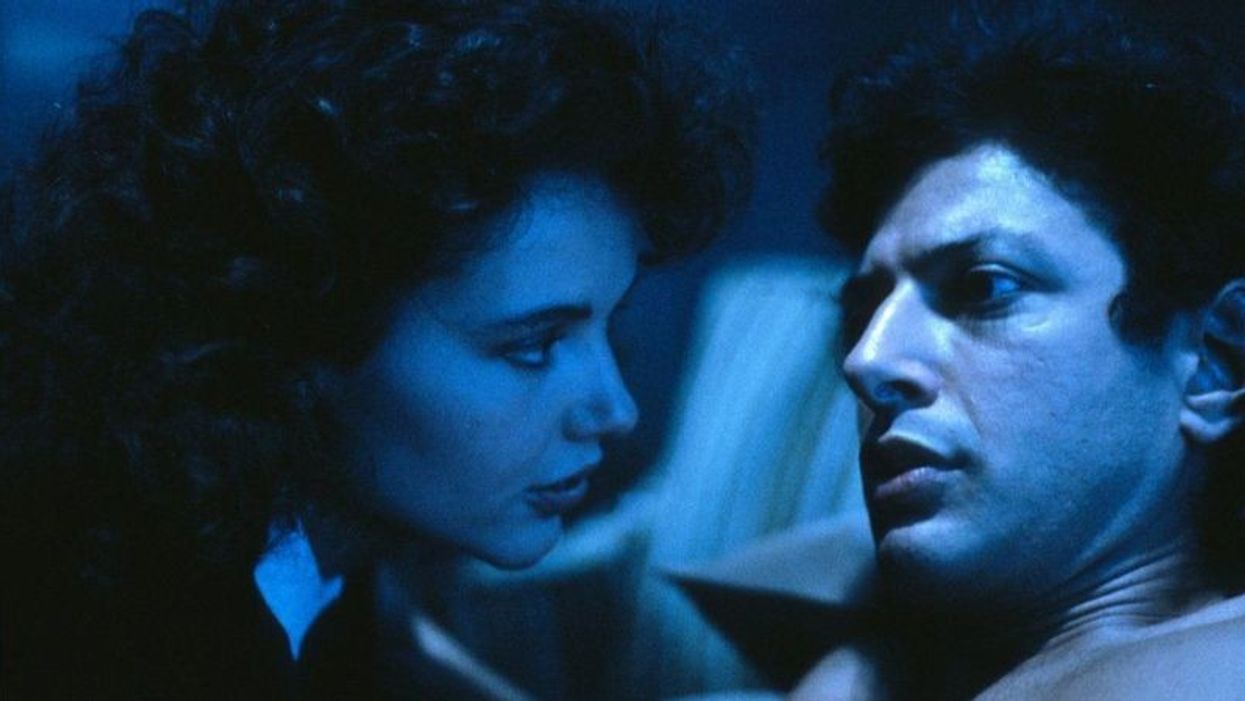Why 'The Fly' Is Still a Body Horror Masterpiece
Cronenberg's masterpiece of sci-fi and gross-out body horror can also teach us valuable lessons about storytelling.

The set-up for David Cronenberg's remake of The Fly is straightforward enough. The handsome, eccentric scientist Seth (Jeff Goldblum) is trying to perfect a teleportation device. When he tests it on himself, the experiment goes horribly wrong, to the dismay of his girlfriend Ronnie (Geena Davis), who has to watch him slowly transform into a grotesque human/fly monster.
For anyone who has issues with, uh, a man turning into a giant, oozing fly -- you might want to turn back now.
In a recent video, Ryan Hollinger takes a look at what makes The Fly more than just a basic body horror film. Watch the video below.
What is body horror?
When scary movie lovers think body horror, Cronenberg usually comes to mind. So many of his films fall into this sub-genre. He melts, explodes, transforms, and has little monsters grow out of his characters.
One reason body horror works so well is that it's not something characters in scary films can run from. It involves their bodies turning against them, trapping them, destroying what makes them human.
As the video points out, "Body horror is entirely psychological in nature." It's also usually just really gross, involving a lot of blood, gore, and slime. Audiences have visceral reactions to body horror.

Development of The Fly
To get at what really elevates The Fly, some backstory is needed.
If you aren't aware, there is a 1958 version of The Fly that is a fairly straightforward B-movie horror flick. In that version, the scientist immediately becomes a fly/human hybrid, basically a human with a fly head and fly arm (while his tiny human head and arm are transplanted to a fly body).
This transformation is instantaneous. When a remake was floated, writer Charles Edward Pogue decided to slow this process down, so that the character would be transforming throughout the film. Several drafts were considered, financing was found (through Mel Brooks, oddly enough), and Cronenberg was brought on.
And it was his ground-up rewrite that really took the story to a new place.

The Fly's heart
What Cronenberg does so masterfully in this film is ground the horror in humanity and focus the story on its central relationships.
Seth and Ronnie begin seeing each other at the start of the film, but Seth worries she might rekindle something with her editor, Stathis Borans (John Getz). There is jealousy between the men, and concern on Ronnie's part when Seth starts to unravel.
On a deeper level, Ronnie's appearance in Seth's life also serves as an emotional turning point for him. When they begin their relationship, he starts caring more about his legacy, his work, and his place in the world.

"Of course, interestingly, the exact same moment that I achieve what'll probably prove to be my life's work, that's the moment when I start being the real me, finally," Seth says in the movie.
What is that "real me"? As he transforms, Seth starts to embrace characteristics within himself that veer overwhelmingly negative. He uses his newfound power and strength to control and intimidate. He becomes violent and vain.
"The thing about his metamorphosis isn't the physical monster he becomes. It's the human monster he seemingly already was."
"The thing about his metamorphosis isn't the physical monster he becomes," the video points out, "it's the human monster he seemingly already was."
Ronnie remains the victim and the emotional compass for the story, while the two male characters effectively swap places. Stathis starts the film as a misogynist scumbag but becomes more human and caring toward Ronnie, while Seth becomes more monstrous.

The complexity of these relationships, and the layers of personality these characters reveal throughout the course of the film and during Seth's transformation, are both elements that make The Fly emotional and compelling.
Sure, it might have been fine to enjoy Jeff Goldblum engage in shenanigans under layers of gory makeup. But when audiences also experience the fear he inflicts, and the fear he feels himself, that makes The Fly a body horror film that still impacts -- more than 30 years after its release.
What are other themes that you've taken away from The Fly? Do you agree with this analysis? Let us know in the comments!
What's next? How about some more horror?
Examine the lighting in Halloween, and take a look at how you can create atmosphere in horror. You might also enjoy a compilation of horror reaction shots. And finally, here's a list of the scary movies you can watch on HBO now!
Source: Ryan Hollinger











